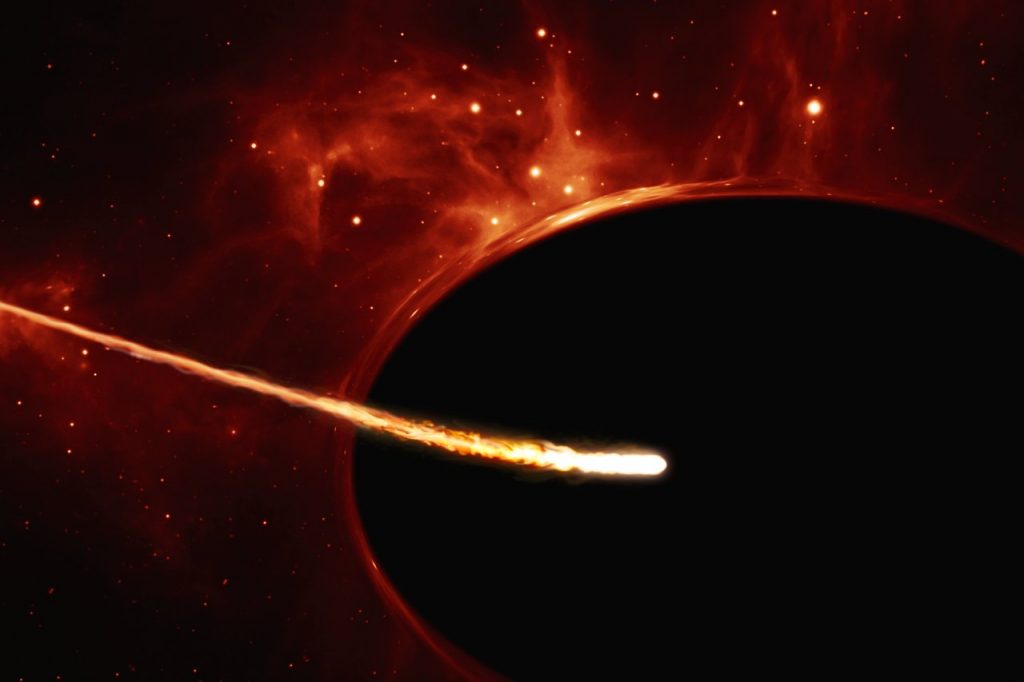
Credit:ESO, ESA/Hubble, M. Kornmesser Information extracted from IPTC Photo Metadata: This artist’s impression depicts a Sun-like star close to a rapidly spinning supermassive black hole, with a mass of about 100 million times the mass of the Sun, in the centre of a distant galaxy. Its large mass bends the light from stars and gas behind it. Despite being much more massive than the star, the supermassive black hole has an event horizon which is only 200 times larger than the size of the star. Its fast rotation has changed its shape into an oblate sphere. The gravitational pull of the supermassive black hole rips the the star apart in a tidal disruption event. In the process, the star was “spaghettified” and shocks in the colliding debris as well as heat generated in accretion led to a burst of light.
We all know the concept of an event horizon. It is the point where you move past a point of no return without realising it, as David Finkelstein theorised in 1958 would happen as you approached a black hole. Steve Keen has set out why we may have done precisely the same thing with the climate here. The language is a little fruity in places (but justifiably so, in my view, to differentiate between serious economic research and the rubbish which Nordhaus and others have polluted the field of the economics of climate change with, the first 25 minutes gives you the general idea).
What should actuaries do in an event horizon situation? Well in some ways it depends on the political climate you are working in. Can anyone imagine an equivalent of Donald Trump saying that he didn’t believe in black holes and that spaghettification was invented by Italy to support their pasta industry? This probably doesn’t seem as ridiculous as it would have done only a few years ago, which demonstrates how the political environment has changed.
What actuaries have to do in an event horizon situation, in my view, is not to give up. That means:
- pushing clients hard towards decarbonisation as quickly as possible; and
- offering people investment opportunities which are part of the solution rather than the problem (the FT has pointed out that there is a proliferation of green funds, however Richard Murphy (one of the Green New Deal group) and others have pointed out that there is no way currently of knowing which if these funds are truly green – actuaries could play a leading role in accrediting funds to help with this.
Steve Keen is very pessimistic about the possibilities of a Green New Deal to meet the need to keep warming below 2 degrees above pre-industrial levels. And there are many that believe that you cannot decouple economic growth from carbon emissions. But they may be wrong, and in my view it is worth pursuing the restructuring of our economy which would be required to deliver it, if only to reduce the level of carbon rationing that will be required otherwise within our lifetimes. We do not have a Government which is remotely interested in this in power at the moment, so following this path comes with considerable professional risks, particularly when short term knee jerk policies to deal with currently failing companies (eg FlyBe) are going to be dominating the headlines, with even more to follow once the long-term realities of Brexit become apparent after 31 January. Another event horizon it would seem.
